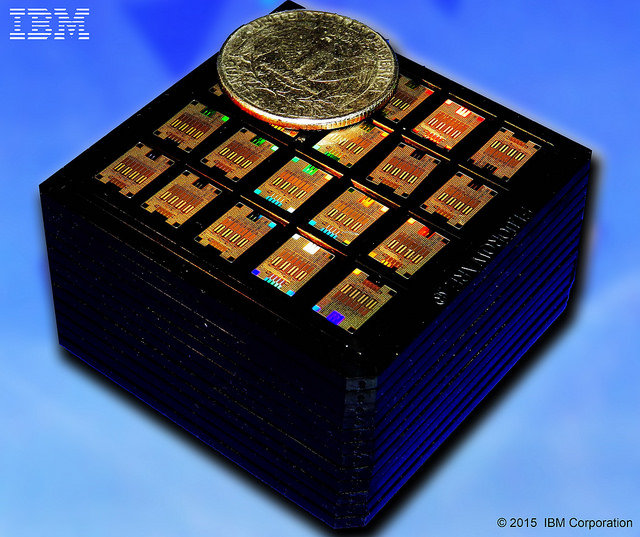
A few days ago, IBM announced that it has produced for the first time a fully integrated silicon photonic chips. This is the prototype of a transceiver to be used in data centers to get transmissions up to 100 Gb/s. The aim is to increase the transfer speed of large volumes of data in cloud and Big Data applications, those which require an exchange of information very high and require specific technologies.
IBM has been working on a technology called CMOS Integrated Nano-Photonics Technology in the field of photonics and nanophotonics, or nano-optics, silicon, for several years. At the end of 2012 the company announced it made a big step forward being able to produce the first simple silicon nanophotonic chip using an industrial production process. This step was important because it was no longer only a laboratory experiment but a test of the changes in the production line used for normal silicon chips.
The photonic chip use optical components to send data via light pulses. This makes it possible to transfer data at extremely high speed between computer chips in servers, supercomputers and large data centers. Current systems have some bottlenecks that limit their performances but IBM has now created a prototype that integrates several optical components with electrical circuits on a single silicon chip using a semiconductor technology under 100 nanometers.
IBM’s silicon photonic chips use four light frequencies, which correspond to four colors, within an optical fiber, in place of traditional copper cables, to transmit data in a computer system. The speed of data transmission is so high that IBM claims to be able to download a digital high-definition movie in just two seconds.
Today in the data center laser technology of the VCSEL (Vertical Cavity Surface Emitting Laser) type can be used. The new photonics technology promises data transmission at longer distances overcoming the limitations of those laser technologies.
The use of the optical signals instead of electrical ones offers not only higher transmission speed but also a higher energy efficiency. Today’s large data center require huge amounts of energy to operate so any improvement in terms of consumption is welcome for their owners and the environment.
These new silicon photonic chips are still experimental but IBM has been investing a lot of money and other giants in this field such as Intel are developing that kind of solutions as well. It’s clear that for a few years these chips will be used only in large systems but the revolution of photonic chips seems started.

